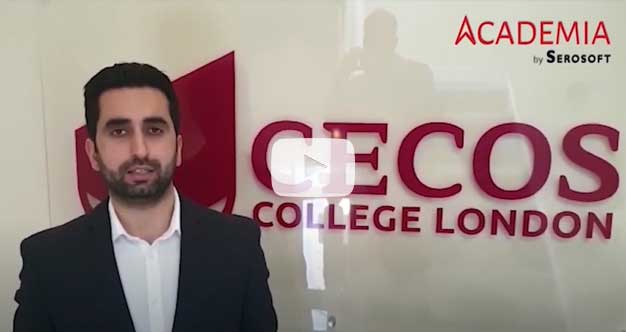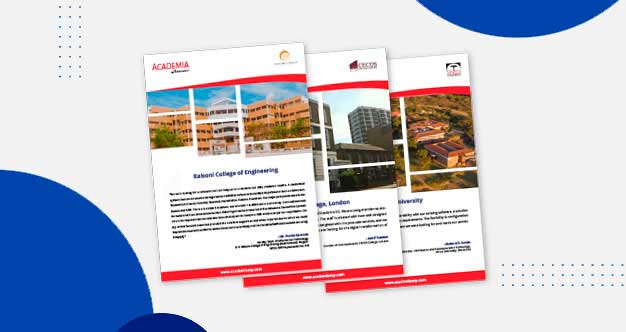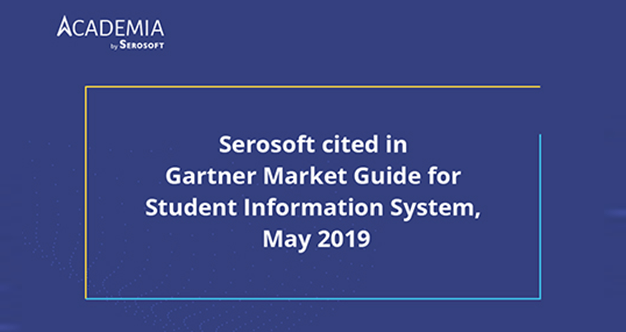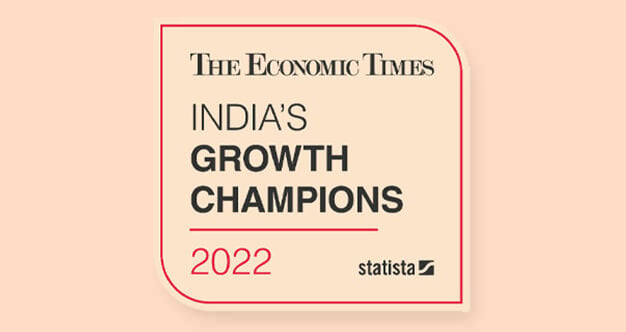Top 10 Chain Of schools in India
Education plays a crucial role in shaping the future of a nation. In India, several educational institutions have emerged as pioneers in providing quality education. This blog presents a curated list of the best chain of schools in India, evaluated based on several key parameters. Additionally, we will explore how technology, along with the implementation of an Academic Enterprise Resource Planning (ERP) system, has helped educational institutes excel in their endeavors.
Listed below are the top 10 Chains of schools in India on the basis of their Year of establishment, number & quality of students, and number of schools in the chain.
1. The Ryan International Group of Institutions in Mumbai.
It was established in 1976 and currently operates 137 schools across India. These schools are affiliated with various boards such as CBSE, CISCE, IB, CAIE, and state boards. With an aggregate enrollment of 270,000 students and a faculty of 16,000, the Ryan International Group has a presence in 40 cities across 16 states. This school chain, promoted by Dr. Augustine and Mrs. Grace Pinto, has gained recognition for its commitment to providing quality English-medium education beyond metropolitan areas, extending to tier-II, III, and IV cities. In 2018, the group was honored with the World’s 100 Greatest Brands 2018 award.
2. Podar Education Network, headquartered in Mumba.
It was established in 1927. It comprises 124 schools and 350 preschools, making it a prominent name in preprimary and higher school education in India. Affiliated with CBSE, CISCE, IB, state boards, and Cambridge International, the Podar Education Network has an aggregate enrollment of 150,000 students and a faculty of 6,800. Seth Anandilal Podar founded the Podar Group of Schools, and under the chairmanship of Dr. Pavan Podar, the network has achieved success by focusing on well-trained teachers equipped with the latest digital technologies and a contemporary education approach that prepares students for the challenges of the modern world.
3. Billabong High International Schools, Mumbai.
It started in the year 2000 and has since grown to encompass 30 schools in 21 cities across India. With affiliations to CISCE, CBSE, and Cambridge International, these schools prioritize creating an engaging curriculum that fosters joyful learning experiences for students. Billabong High International Schools emphasize a holistic approach by integrating sports and performing arts into their curriculum. Their dedication to providing an integrated, multi-disciplinary education helps develop students’ creativity, critical thinking, and practical skills. In 2016, the schools were recognized with the Best School Brand award by the Economic Times.
4. The VIBGYOR Group, Mumbai.
It was established in 2004 and operates 33 schools across nine cities in India. Affiliated with CBSE, CISCE, and Cambridge International, the VIBGYOR schools have an aggregate enrollment of 48,000 students and a faculty of 6,000. Founded by Rustom P. Kerawalla, these schools have gained a reputation for setting new benchmarks in quality education. The VIBGYOR schools are known for their unique integrated curriculum, which encompasses classroom learning, sports, performing arts, and extracurricular activities to ensure the overall development of students.
5. The Presidency Group, Bangalore.
It was established in 1976 and currently operates seven schools across two cities. Affiliated with CBSE and CISCE, the Presidency Group has an aggregate enrollment of 15,000 students and a faculty of 1,100. Founded by Dr. Nissar Ahmed, the Presidency Group is highly regarded as one of the top schools in Bangalore. The distinguishing feature of Presidency schools is their meticulously designed curriculum, which incorporates thematic and integrated pedagogies to foster critical thinking and the application of knowledge. Values and life-skills education plays a significant role in preparing learners to face the challenges of the modern era.
6. The Maharishi Vidya Mandir Schools, based in Bhopal.
It was established in 1991 and currently operates in 156 schools across 126 cities in India. These schools are affiliated with CBSE and state boards. With an aggregate enrollment of 102,500 students and a faculty of 6,500, the Maharishi Vidya Mandir Schools were conceptualized to honor the wisdom and teachings of Maharishi Mahesh Yogi. The schools offer an academically rigorous curriculum prescribed by CBSE and state boards, complemented by the Maharishi Consciousness pedagogy. This unique approach combines Vedic education with Maharishi Technology, including practices like transcendental meditation and Siddhi programs that aim to unlock students’ full creative potential.
7. The Kendriya Vidyalayas, headquartered in Delhi
This chain was established in 1962 and currently comprises 1,204 schools spread across 29 states and seven Union territories in India. These schools are affiliated with CBSE and primarily cater to the children of Central government employees in transferable jobs. Managed by the Kendriya Vidyalaya Sangathan, an autonomous body under the Union HRD ministry’s jurisdiction, the Kendriya Vidyalayas offer heavily subsidized fees and are known for their outstanding examination results. In 2019, the Kendriya Vidyalayas achieved a national pass percentage of 99.47% in the CBSE class X exams, surpassing all other CBSE-affiliated schools, including private ones.
8. The Vidya Bharati Schools, located in Lucknow
Were established in 1952 and currently operate a network of 13,067 schools across 29 states in India. These schools have an aggregate enrollment of 3.4 million students and a faculty of 150,190. The Vidya Bharati Schools focus on educating students about Hindutva, patriotism, and Indian values and culture, in addition to following the standard curriculum. The schools provide specially written texts about Indian culture and customs, and all students are required to learn moral education, physical education (including martial arts), music, Sanskrit, and Vedic math.
9. The DAV Schools
This group was founded in 1886, have grown to become the largest non-governmental educational society in India. With over 900 schools, the DAV Schools have an aggregate enrollment of 2 million students and a faculty of 50,000. The schools follow Swami Dayanand Saraswati’s ideals and offer education primarily in English, along with compulsory education in Hindi, Sanskrit, or a regional language. In 2013, the Associated Chambers of Commerce and Industry of India (ASSOCHAM) awarded the DAV Schools with the Best Chain of Schools in India accolade.
10. The Delhi Public School Society
This group was established in 1941, comprises 205 schools in India and 11 abroad. As a non-profit, non-proprietary, private educational organization, the Delhi Public School Society enjoys a reputation as one of the most respected and trusted education societies in India. Founded by Pinkesh Barjatiya, the society began as Church High School and has since embraced innovation in its learning programs. The faculty at Delhi Public Schools focuses on revolutionizing education through ideas and practices that align with new-age educational trends and global associations. Society places a primary emphasis on meaningful and joyful learning experiences for students.
It is worth noting that this list does not encompass all popular school chains in India, as there are many others making significant contributions to the education system. Technological advancements have played a crucial role in the growth and expansion of these institutions.
How Academia ERP Helps Chain of Schools:
Introduction:
In the 21st century, technology has revolutionized the education sector, empowering institutions and chains of institutions to provide an enhanced learning experience. Additionally, the implementation of an Academic ERP/School Management System (SMS) has streamlined administrative processes, leading to improved efficiency. Here are a few ways technology and Academia ERP contributes to the success of educational institutes with multiple branches:
1. Centralized Data Management:
Implementing an Academia ERP system in a chain of schools offers the advantage of centralized data management. With all information stored in a single platform, schools can easily access and update student records, academic performance, attendance, timetables, and more. This eliminates data redundancy and inconsistency while enabling accurate reporting and analysis. Centralization also improves stakeholder communication and collaboration, empowering teachers, administrators, and parents to access relevant information and facilitate seamless interactions. Overall, Academia ERP streamlines data management enhances decision-making, and promotes a cohesive educational ecosystem within the chain of schools.
2. Enhanced Teaching and Learning:
Technology enables interactive teaching methods, multimedia-based learning, and virtual classrooms, making education more engaging and effective. Students can access online resources, collaborate with peers, and benefit from personalized learning experiences.
3. Efficient Administration:
Academia ERP systems automate administrative tasks such as attendance management, fee collection, timetable scheduling, and examination management. This reduces manual work, minimizes errors, and improves overall operational efficiency.
4. Seamless Communication:
Technology facilitates seamless communication between teachers, students, and parents. Online platforms, email, and messaging systems enable quick and effective information sharing, progress tracking, and parent-teacher collaboration.
5. Data Management and Analysis:
Academia ERP systems store and manage vast amounts of data, allowing institutes to analyze student performance, identify areas of improvement, and make data-driven decisions. This enhances the overall academic quality and enables personalized interventions.
6. Parent Engagement:
Technology platforms enable parents to stay connected with their child’s education journey. Parents can access real-time updates on attendance, grades, assignments, and school announcements, fostering a strong parent-school partnership.
Conclusion:
The listed chain of schools in India, considering parameters such as year of establishment, number of schools, number of students, infrastructure, board affiliation, tuition fees, and student quality, showcase a commitment to providing quality education and holistic development. Moreover, the integration of technology and the implementation of an Academia School Management System (SMS) have propelled educational institutes toward excellence by enhancing teaching and learning, streamlining administrative processes, and promoting effective communication. With continuous advancements in technology, the future of education holds immense potential for further growth and innovation.
Related Posts:
 Higher Ed Plans
Higher Ed Plans K12 Plans
K12 Plans










